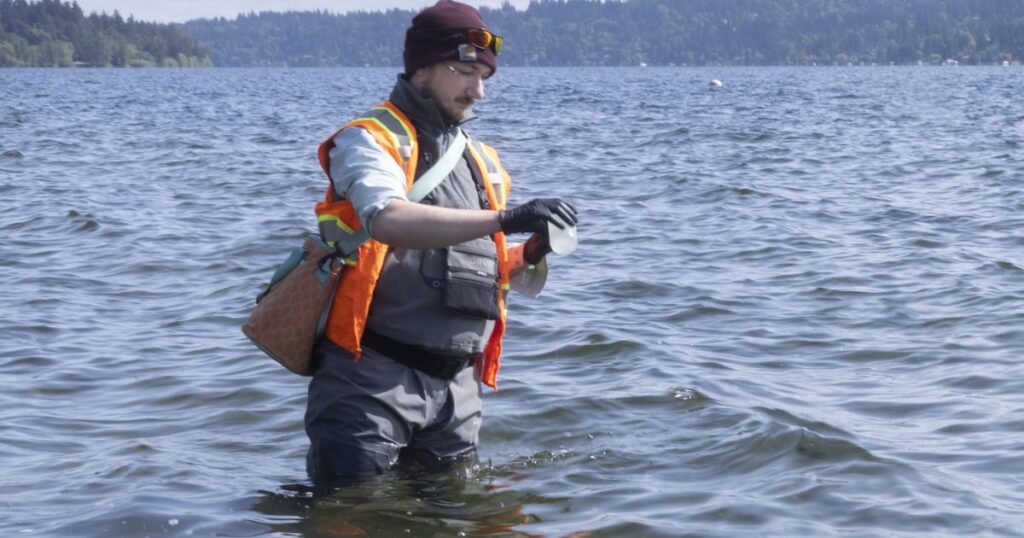Environmental Monitoring at Pritchard Island Beach
At Pritchard Island Beach, the calm waters of Lake Washington are regularly sampled by Wyatt Klepac, an environmental lab scientist with King County. The samples are analyzed in a lab for bacterial growth and toxic algae, both potential threats to public health that could disrupt beachgoers’ swimming plans.
Climate change’s impact on such closures is still uncertain, but warmer water generally supports algae growth while bacteria often originates from animal waste. As temperatures rise, bodies of water serve as critical cooling points, especially for people without another means to escape the heat.
Over the last five years, beaches in King County have been closed nine times each swim season due to toxic algae and 15 times due to faecal bacteria. However, testing and reopening protocols have evolved over that time. The Rainier Beach park, one of the 27 locations where water samples are tested for harmful microbes by King County scientists, can offer insight into what might be expected this summer.
Understanding Toxic Algae
Toxic algae, a type of cyanobacteria (also called blue-green algae), produce toxins and pose a threat to public health. Cyanobacteria, one of the oldest organisms on Earth, are believed to have contributed to the creation of the oxygen we breathe today. Both cyanobacteria and green algae, a group of plant-like organisms, are essential parts of a healthy lake ecosystem. However, if they proliferate beyond the lake’s capacity, an algae bloom occurs, potentially leading to beach closures. Water samples are regularly tested for toxins and E. coli during the summer, and any reported cyanobacteria bloom triggers additional testing. A beach can reopen after one week of low bacteria or two weeks of low toxins.
The Mystery of Algae Toxins and Blooms
The exact cause of toxin production in cyanobacteria is not fully understood, according to Rebecca North, a professor at the University of Missouri who specializes in freshwater toxic algae. Cyanobacteria blooms, which can appear on the water as a paint spill, slimy scum, foam, or clumps, and may be blue-green, red, brown or pea colored, don’t always have toxins. Even if a specific strain of cyanobacteria that is known to produce toxins is blooming, it doesn’t guarantee toxin presence. Post-bloom toxin degradation can take time, and toxins can persist in the water even after the bloom has faded, North stated. A helpful gallery of examples is available online for public reference.
The Impact of Climate Change on Beach Closures
While there is a general expectation that climate change will increase algae growth, which might lead to more toxic algae, the relationship is complicated, says Rachael Gravon, a King County limnologist. A “universal relationship” between temperature, nutrients, and algae toxicity isn’t observed across all lakes.
Research into toxic algae is still relatively new, and testing is often reactive, initiated only after a bloom has been reported. Increased awareness has resulted in more reports, but data collection is often limited to warmer months. Thus, it’s difficult to determine whether toxic algae have become more prevalent as global temperatures have risen. In Seattle, toxic algae are most commonly detected in the fall due to nutrient circulation from windstorms and rain run-off. However, they have also been observed during winter.
Climate change might increase bacteria-related closures due to more frequent and intense rainstorms, according to King County ecologist Daniel Nidzgorski, but any impact is likely to be minor.
Original Story at www.seattletimes.com
